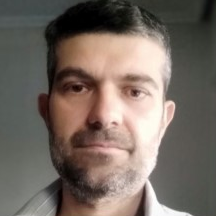Microalgae as a Source of Alternative Proteins and Other Biomolecules
A special issue of Bioengineering (ISSN 2306-5354). This special issue belongs to the section "Biochemical Engineering".
Deadline for manuscript submissions: closed (31 December 2022) | Viewed by 11693
Special Issue Editors
Interests: cultivation of algae; biomass production; biotechnology for food, feed and biofuels; valorization of waste-streams; recovery and reuse of nutrients
Special Issues, Collections and Topics in MDPI journals
Interests: Microalgae, stress conditions, secondary metabolites induction, phycobilins, biopolymer, modelization
Special Issue Information
Dear Colleagues,
The rapid human population growth along with high demand for biological molecules as well as changes in the food & feed market, have aroused the interest of the scientific community in the exploration of new sources of proteins and bioactive molecules from both production and processing. Microalgae, including cyanobacteria, have been emerged and explored as a competitive and futuristic source for the production of various biomolecules, including proteins, lipids, polyunsaturated fatty acids, polysaccharides, phycobiliproteins, pigments, enzymes etc. with potential applications in food, pharmaceutical and industrial sectors. They are versatile microorganisms that can be grown either in photoautotrophic, either in mixotrophic or heterotrophic mode. However, optimal productivity, recovery and quality of microalgal bioactive molecules of interest are perennial concerns for their industrial and commercial applications. To overcome such limitations improvements could be achieved through biotechnological and bioengineering methods for improved productivities and yields, while also novel technologies could be applied to improve the extraction, recovery and quality of bioproducts.
This Special Issue will focus on original research articles and comprehensive reviews dealing with recent advances in algal biotechnology.
Topics of interest for this Special Issues include the following:
- Innovative bioprocesses and strategies for optimized microalgae cultivation for protein and biomolecules production
- Microalgal bioprocess engineering for protein and biomolecules production enhancement
- Advanced methods for microalgae proteins and peptides characterization
- Downstream extraction technologies for protein and bioactive molecules recovery
- Application of proteins and bioactive molecules in food, pharmaceutical and industrial sector
Dr. Giorgos Markou
Dr. Imene Chentir
Guest Editors
Manuscript Submission Information
Manuscripts should be submitted online at www.mdpi.com by registering and logging in to this website. Once you are registered, click here to go to the submission form. Manuscripts can be submitted until the deadline. All submissions that pass pre-check are peer-reviewed. Accepted papers will be published continuously in the journal (as soon as accepted) and will be listed together on the special issue website. Research articles, review articles as well as short communications are invited. For planned papers, a title and short abstract (about 250 words) can be sent to the Editorial Office for assessment.
Submitted manuscripts should not have been published previously, nor be under consideration for publication elsewhere (except conference proceedings papers). All manuscripts are thoroughly refereed through a single-blind peer-review process. A guide for authors and other relevant information for submission of manuscripts is available on the Instructions for Authors page. Bioengineering is an international peer-reviewed open access monthly journal published by MDPI.
Please visit the Instructions for Authors page before submitting a manuscript. The Article Processing Charge (APC) for publication in this open access journal is 2700 CHF (Swiss Francs). Submitted papers should be well formatted and use good English. Authors may use MDPI's English editing service prior to publication or during author revisions.
Benefits of Publishing in a Special Issue
- Ease of navigation: Grouping papers by topic helps scholars navigate broad scope journals more efficiently.
- Greater discoverability: Special Issues support the reach and impact of scientific research. Articles in Special Issues are more discoverable and cited more frequently.
- Expansion of research network: Special Issues facilitate connections among authors, fostering scientific collaborations.
- External promotion: Articles in Special Issues are often promoted through the journal's social media, increasing their visibility.
- Reprint: MDPI Books provides the opportunity to republish successful Special Issues in book format, both online and in print.
Further information on MDPI's Special Issue policies can be found here.







